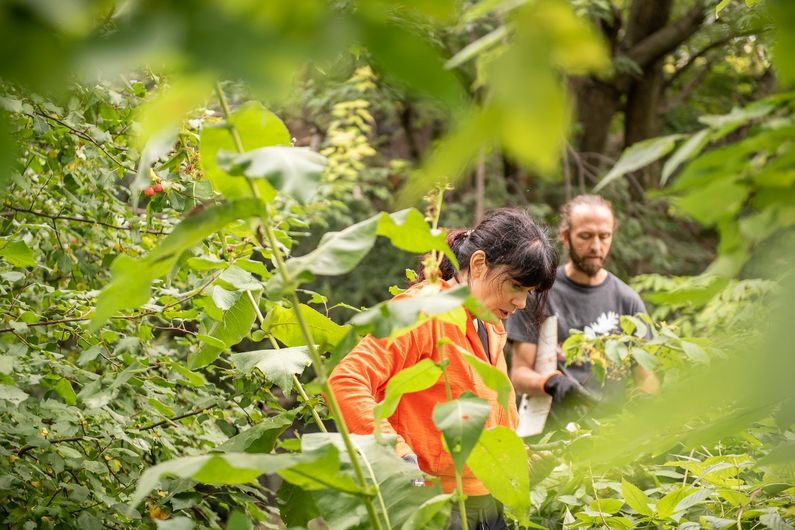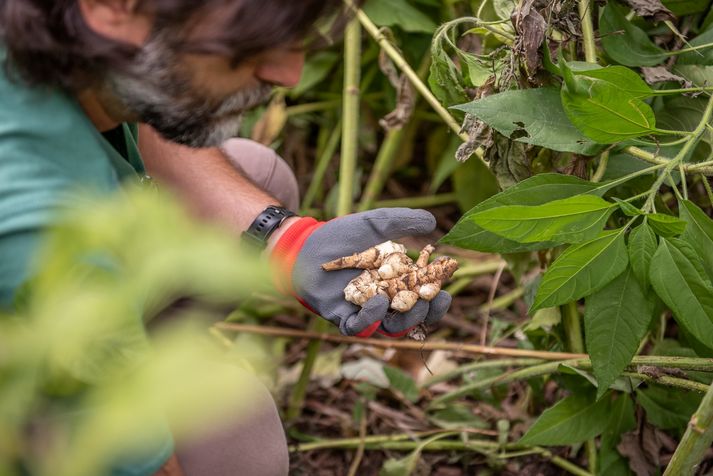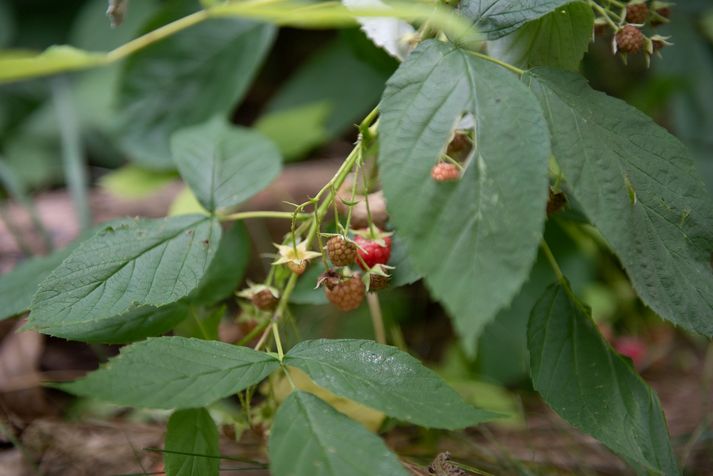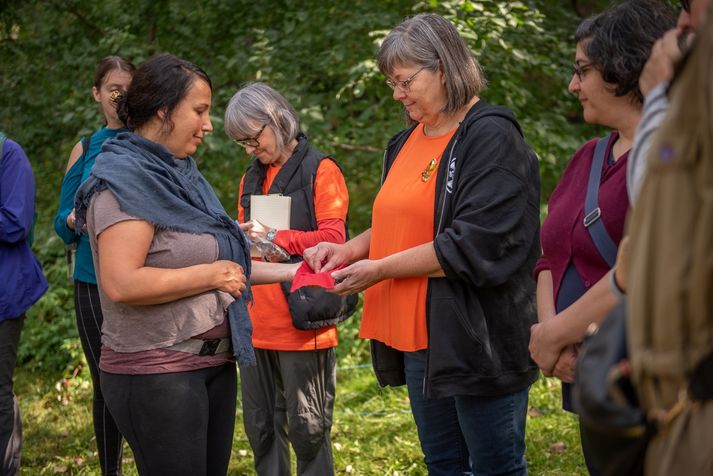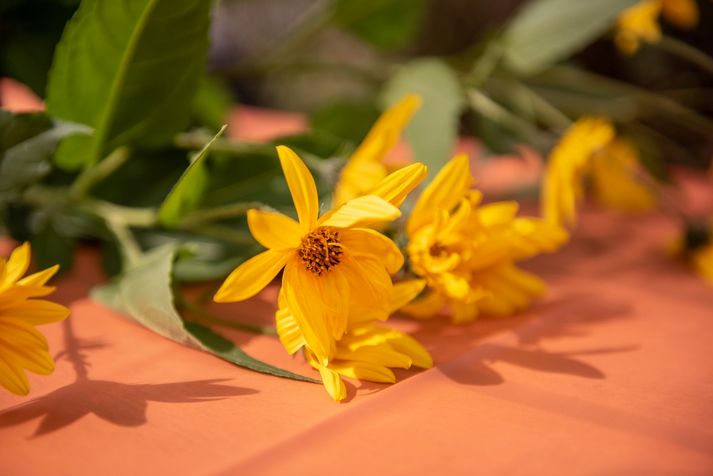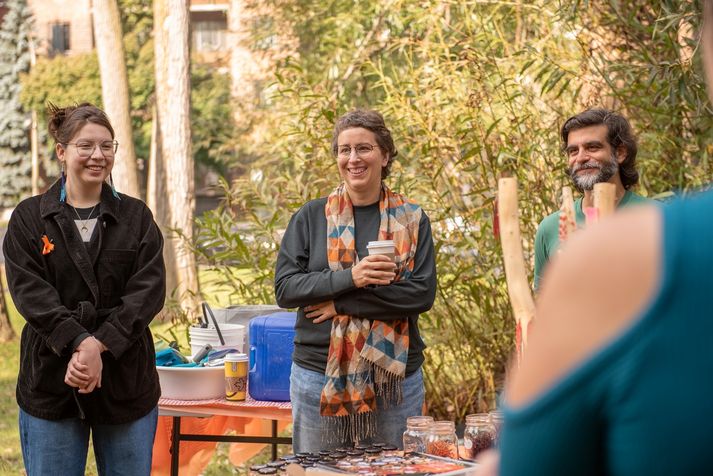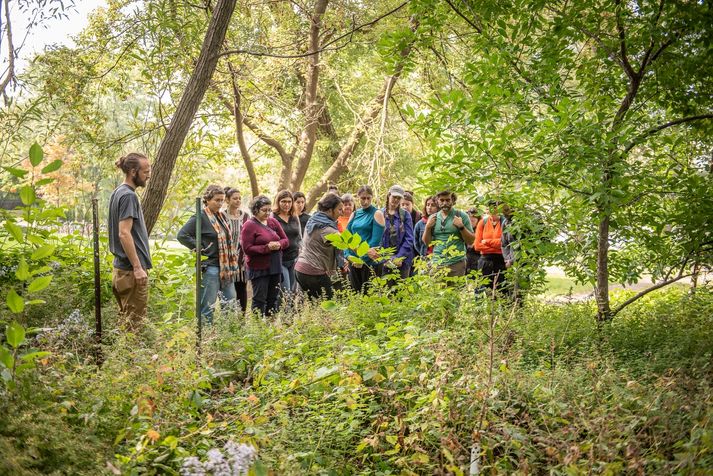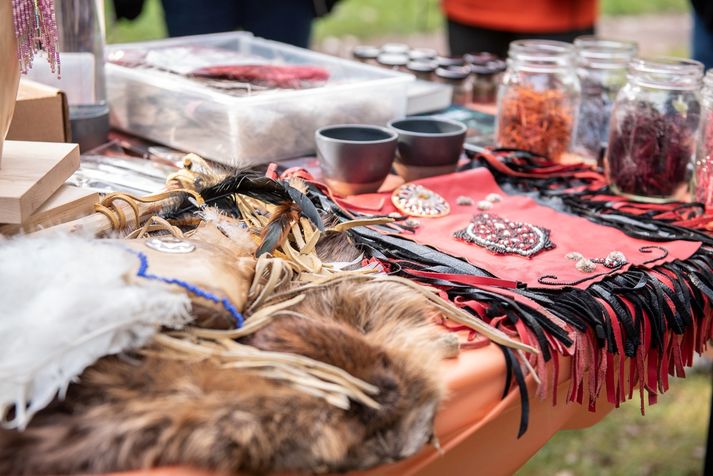Medicinal plants thrive here at UdeM
- UdeMNouvelles
10/23/2023
- Virginie Soffer
The main campus on Mount Royal is home to many healing plants, such as ginger root and goldenrod. A recent walking tour of the area will be followed by others in the spring.
On Sept. 29, Université de Montréal's First Peoples Gardens Committee held an activity to discover and harvest the native medicinal plants that grow on the main campus on Mount Royal.
On the tour, some 15 people, including Indigenous students, learned about the traditional Indigenous medicinal plants and did some light work in the "food forest" near UdeM metro station, helping protect the plants and green spaces for the coming winter.
Along the way, the group learned more about traditional knowledge and protecting the environment, including responsible harvesting, sharing what they collected and enjoying an on-site tasting to find out how the plants are tradtionally used.
The event was led by Mélanie Savard, a Huron-Wendat knowledge-holder, and Mélanie Sheehy, a traditional herbalist who conducts research with Indigenous communities, collaborating with biology professor Alain Cuerrier and pharmacology and physiology professor Pierre Haddad.
'An exceptional forest'
The land near the metro stop and student residences is special, Sheehy said.
“It's an exceptional forest, a maple-basswood stand, which is extremely rare in Quebec in a natural state. The soil is very rich and it is home to plants that are seldom found elsewhere.”
Sheehy has compiled a full inventory of the plants growing in these woods.
In 2014, Alexandre Beaudoin, an UdeM biodiversity advisor, got permission to plant medicinal plants on this part of Mount Royal. Participants in Production agricole urbaine soutenable et écologique (P.A.U.S.E.), UdeM's urban farming group got busy planting raspberry bushes, Jerusalem artichoke, goldenrod, burdock, Canadian wild ginger and more.
Beaudoin also obtained an exemption allowing him to harvest plants, trees and shrubs at a site where it is normally strictly forbidden and punishable by fines of up to $1,000.
The co-creation of these First Peoples Gardens was funded by Quebec's Ministère de l'Économie, de l'Innovation et de l'Énergie and carried out in collaboration with several UdeM units and faculties, including the Sustainable Development Unit, the Buildings Department, and the faculties of Continuing Education, Medicine, Environmental Design and Arts and Science, and with the participation of Indigenous knowledge holders and organizations.
Comfrey, burdock root and more
All the native and introduced species have long been used by Indigenous nations for medicinal purposes. For example, comfrey was used to heal fractured bones, goldenrod to treat urinary tract infections and help with skin care, and burdock root to purify the blood.
“What has been handed down through the generations by Indigenous knowledge holders is now being put under the microscope by university scientists,” said Sheehy.
“This space could be used as an outdoor classroom,” said Chantal Levesque, head of UdeM's certificate programs in public health, health and social services administration, and psychoeducational intervention in the Faculty of Continuing Education, and one of the people involved in creating the First Peoples Gardens.
“We retain things better when we are using our five senses,” added Sheehy, as she offered participants a wild ginger root to smell and taste.
Workshops on traditional Indigenous uses of medicinal plants are planned for the spring at both the mountain campus and UdeM’s Mauricie campus, and will be open to the entire university community. One, for example, will focus on plants for women's health, such as raspberries used to relieve menstruation cramps.


